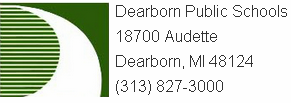Curriculum
PowerPoint Curriculum Overview
Curriculum
- View online: 2005-art-curriculum1
- Art Curriculum Download
- Vocabulary-Elementary
- Vocabulary-Secondary
Grading
Students earn grades on a four-point scale:
- Exceeds expectations for their grade level
- Meets the high expectations for their grade level
- Developing towards meeting expectations
- Area of concern
Grades are divided into four categories:
- Following procedures
- Demonstrates age-appropriate skills, use of tools & materials
- Applies age-appropriate concepts
- Problem-solves creatively
Visual Thinking Strategies (VTS)
The Dearborn Public Schools Art Department utilizes Visual Thinking Strategies in its multifaceted curriculum.
VTS is a technique designed by Abigail Housen to give viewers an opportunity to explore and discuss a wide range of art. VTS emphasizes observation and thinking about the multiple meanings contained in art, building on the capacities of art to captivate, intrigue and stimulate thought. It teachers the necessary foundation skills — careful examination and reflection — upon which other aspects of visual literacy can then build for a lifetime of looking. It is a student-centered curriculum designed for teachers regardless of their background in art.
VTS develops several skills that have appeared in research to date and which transfer to other arenas of cognition and social interaction.
- It leads to habits of using extended observation to increase and enrich understands.
- It builds students’ capacity to develop hypotheses (considering images’ meanings) and to support their points of view (citing what they see that makes them think as they do).
- It encourages openness, flexibility, and the ability to speculate among plausibilities, as well as to revise or change an opinion based on new evidence or deeper reflection.
- It develops communication skills as students’ language becomes more descriptive as they articulate their opinions and exchange views with their classmates.
- It develops the capacity for collaboration as ideas are explored freely in a group — in effect solving complex problems cooperatively.
Click here for more information about Visual Thinking Strategies

